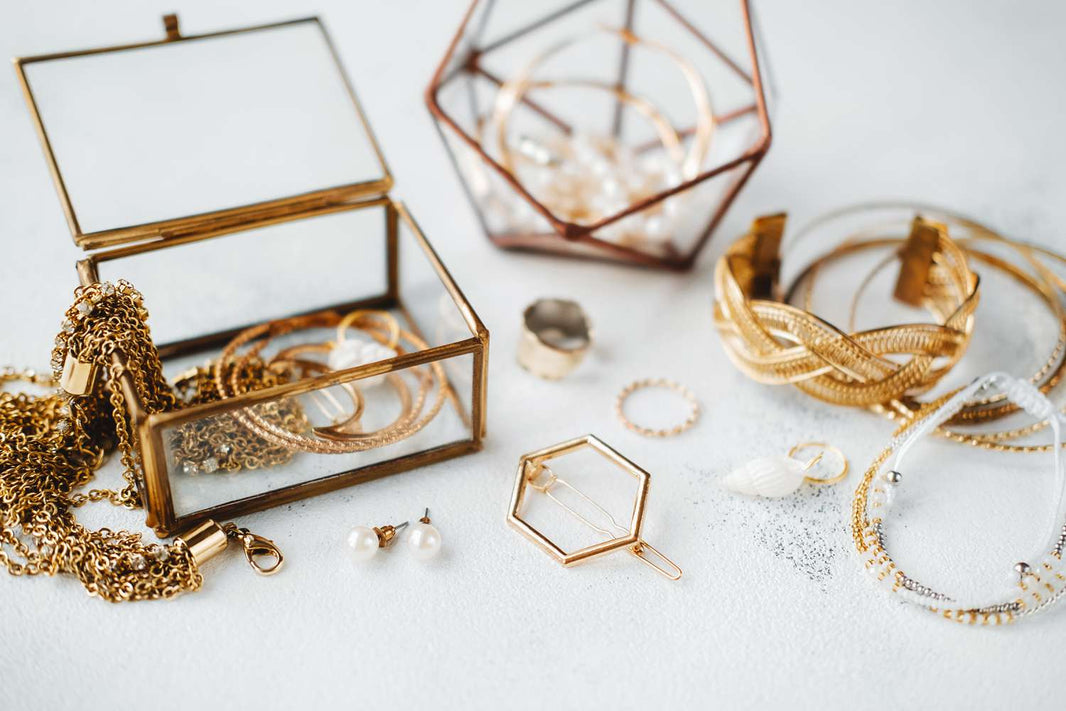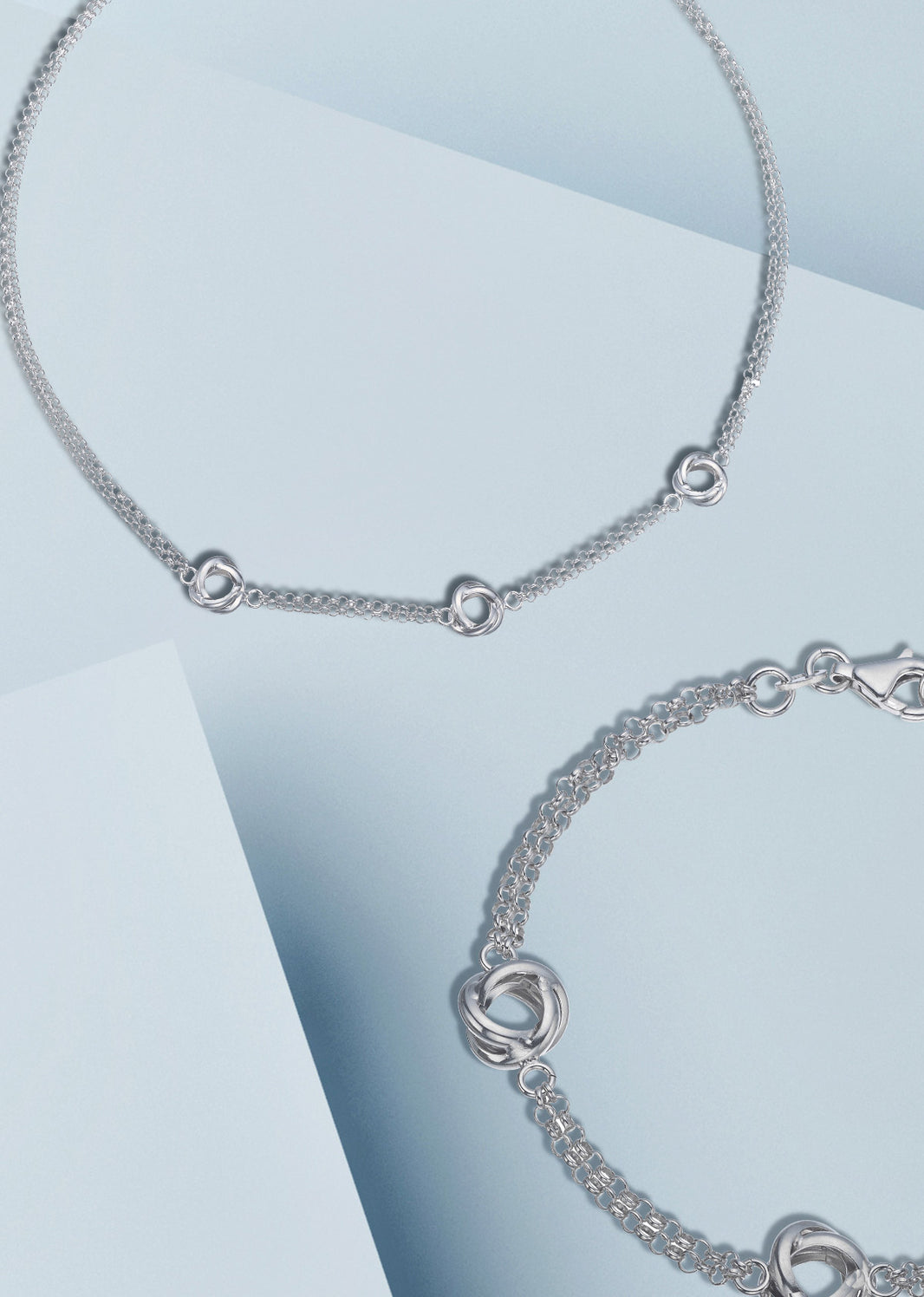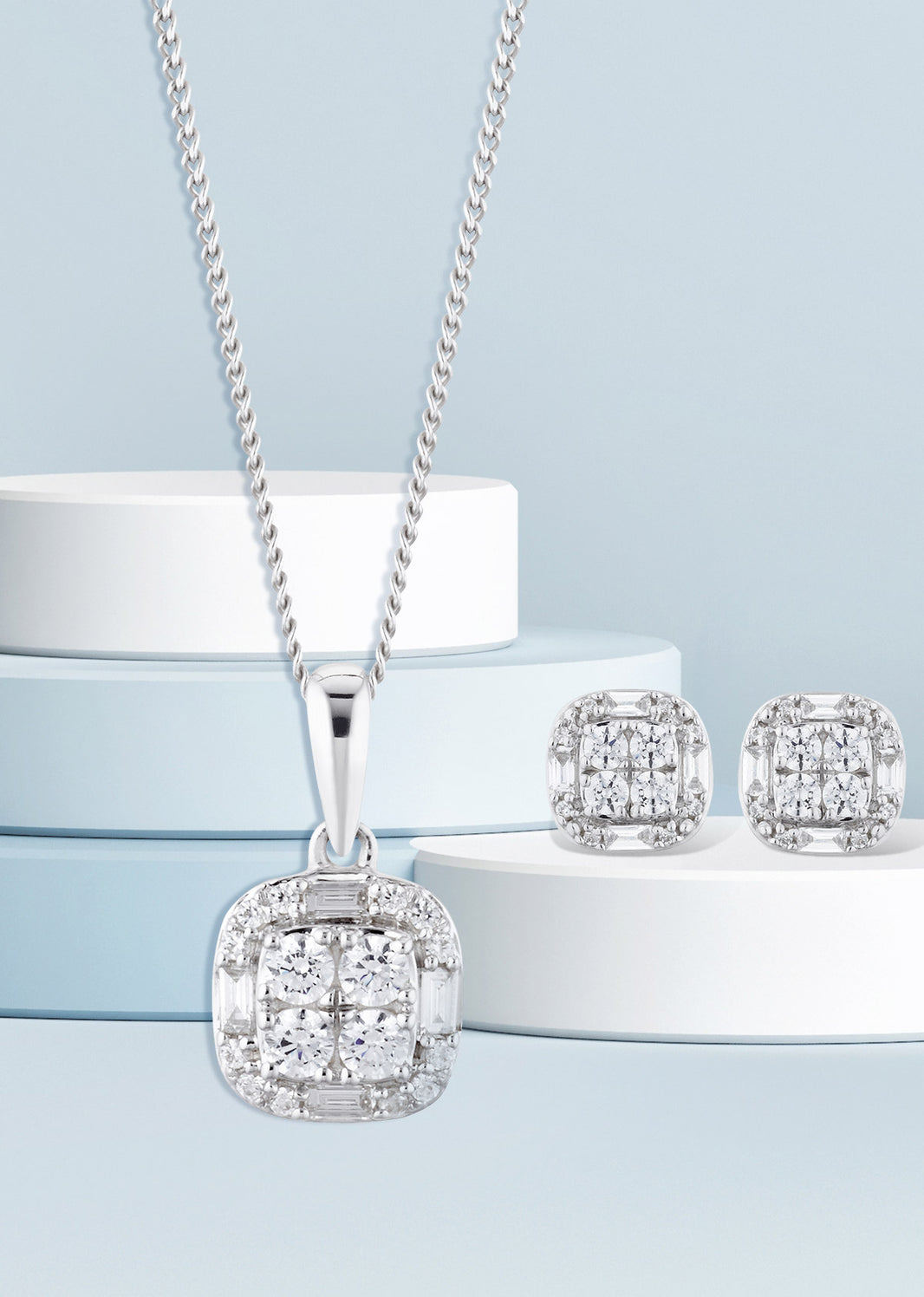How to Clean your Jewellery
No matter how careful you are, the likelihood is that you’ll see a bit of tarnish and scuffing on well-worn items due to the impacts of everyday wear. Here we’ll share some tips on how to clean gold, silver and gemstone jewellery, including information on jewellery care and storage.

TIPS FOR JEWELLERY CARE

How To Clean Silver Jewellery
Sterling silver will naturally tarnish which will make it appear darker.
Tarnish is the result of the chemical reaction when silver reacts to sulphur in the surrounding atmosphere, and the process is accelerated by direct sunlight, moisture or high humidity.
Whilst it can affect the look of your silver jewellery, the tarnish itself doesn’t cause any damage to the underlying silver.
You can help reduce the build-up of tarnish by keeping your silver jewellery in an airtight container and storing it in a cool spot, out of direct sunlight.
Regularly wearing your silver jewellery will also help to prevent tarnish from forming in the first place, so go ahead and show it off as often as you can!
Conclusion
How To Clean Gold Jewellery
All gold needs to be cleaned regularly, but how your gold jewellery will age will depend on the purity of the gold, which is measured in carats.
If a piece of jewellery is 24ct, it means it is pure gold and therefore not mixed with any other metals.
Due to its purity, it won’t tarnish over time, but the higher the purity, the softer the metal, so it will be more susceptible to marks and scratches.
On the other hand, 18ct and 9ct are mixed with other metals which means they are more durable, but also more likely to tarnish.

Conclusion

How To Clean Diamond Jewellery
Diamonds are known for being one of the hardest natural materials, but when it comes to keeping them clean and sparkling, it pays to be careful when handling them.
Grease and dust are the two most likely culprits for dulling the appearance of diamonds, but a quick wipe with a damp cloth will help to prevent the accumulation of everyday dirt and grease.
It’s also best to avoid touching your diamonds, as much of the grease actually comes from the natural oil in our fingers, so the less you touch them, the longer they’ll stay sparkling.
To keep your diamonds in good condition, it’s good practice to remove any diamond jewellery before using chemical products such as household cleaners, as they can be damaging.
Other everyday products such as hairspray, perfume and lotions can also affect the appearance of diamonds, so it’s a good idea to avoid contact if you can, or to take your jewellery off before use.
 We're Open On Christmas
We're Open On Christmas
 We're Open On Christmas
We're Open On Christmas

